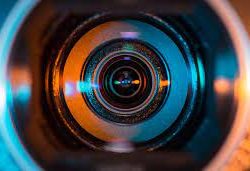
The Best SLR Digital Cameras For Beginners
In fact, many entry level DSLRs are quite affordable these days. But, what are the best SLR cameras for beginners?
Here are our top 5 picks for the best entry level DSLRs:
1. Canon EOS Rebel T6i / T6s
The Canon EOS Rebel T6i and T6s are great entry level DSLRs that offer excellent features and performance. They both have a 24.2 megapixel CMOS sensor, Full HD 1080p video recording, and a vari-angle touch screen LCD. The T6i also has built-in Wi-Fi and NFC connectivity for easy sharing of photos and videos.
2. Nikon D3300
The Nikon D3300 is a great entry level DSLR that offers excellent image quality and performance. It has a 24.2 megapixel CMOS sensor, Full HD 1080p video recording, and a fixed 3.0-inch LCD screen. It also has built-in Wi-Fi and NFC connectivity for easy sharing of photos and videos.
3. Pentax K-S2
The Pentax K-S2 is a great entry level DSLR that offers excellent features and performance. It has a 20 megapixel CMOS sensor, Full HD 1080p video recording, a vari-angle 3.0-inch LCD screen, and built-in Wi-Fi and NFC connectivity. It also has a weather-sealed body, making it ideal for shooting in all kinds of weather conditions.
4. Sony Alpha a6000
The Sony Alpha a6000 is a great entry level DSLR that offers excellent features and performance. It has a 24.3 megapixel Exmor CMOS sensor, Full HD 1080p video recording, and a fixed 3.0-inch LCD screen. It also has built-in Wi-Fi and NFC connectivity for easy sharing of photos and videos.
5. Canon EOS Rebel T6 / T6i / T6s / T7 / T7i
The Canon EOS Rebel T6, T6i, T6s, T7, and T7i are all great entry level DSLRs that offer excellent features and performance. They all have a 24.2 megapixel CMOS sensor, Full HD 1080p video recording, and a vari-angle touch screen LCD. The T6i and T7i also have built-in Wi-Fi and NFC connectivity for easy sharing of photos and videos.


